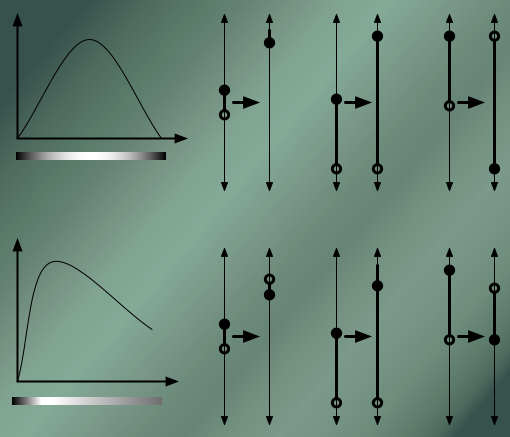pat wrote:There are countless (well, technically
"countable") things in mathematics and physics which could be better visualized if we were more fluent with higher-dimensional spaces.
To mathematicians, a very important example of that would be the ability to visualize complex-numbered graphs in their full glory.
To visualize an "ordinary" real-numbered function, f(x), requires only two dimensions. One dimension (usually the x-axis) represents the different possible values of x. The other dimension (usualy the y-axis) represents the corresponding values of the "output", f(x). Thus, we can construct graphs of functions like:
f(x) = x
f(x) = x^2
f(x) = e^x
f(x) = sin x
etc.
However, there is a constraint. Both the input, x, and the output, f(x), must be real numbers.
Mathematicians often work with a more general class of numbers, the complex numbers. These can be expressed in the form a+bi, where a and b are real numbers and i is the square root of -1. As can be seen, it takes two real numbers to determine the "position" of a complex number. Thus, it takes 2 dimensions to represent a complex number. This is still acceptable.
The problem comes when we try to graph a function in complex numbers. It takes 2 dimensions to represent the input, x, and another 2 dimensions to represent the output, f(x). That's 4 dimensions total, (sadly) more than we have available to us.
Since we can only visualize 3 dimensions, we are forced to restrict either x or f(x) to be a real number, thus eliminating one of the dimensions. Just as the prisoners in Plato's Cave (
http://faculty.washington.edu/smcohen/320/cave.htm) could only see 2D shadows of real 3D objects, we can only see 3D shadows of 4D complex functions. The actual 4D shape generated by a complex function is made up of an infinite number of 3D slices. We are able to view each of these slices, but never at the same time. The best we can do is program our computers to show us each of these slices, one by one. But even then, it is only a partial victory, since we see a 3D object changing, when the actual 4D shape never changes.
If we could be like Emily (a hypothetical 4D being), we could see these complex graphs in their entirety all at once. In the Cave allegory, it would be like the prisoner who stepped out of the cave and saw things in their true, 3D form. But in this case, the true form of these complex graphs is in 4D.
 , but why can we assume that there is a tetraspace at all? No one has ever bumped into a plane with trees and people and stuff on it before, have they? Lines, planes, points, our dimension, and tetraspace all are sensible ideas, but it seems ridiculous to think that they actually exist, doesn't it? People and trees don't just randomly get knocked into Emily's world very much at all, now do they?
, but why can we assume that there is a tetraspace at all? No one has ever bumped into a plane with trees and people and stuff on it before, have they? Lines, planes, points, our dimension, and tetraspace all are sensible ideas, but it seems ridiculous to think that they actually exist, doesn't it? People and trees don't just randomly get knocked into Emily's world very much at all, now do they?



 (mghtymoop, trill and RQ)
(mghtymoop, trill and RQ)